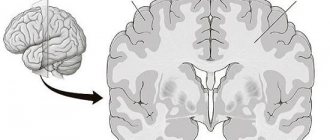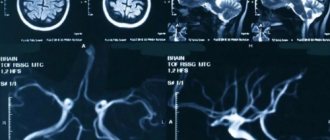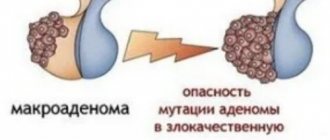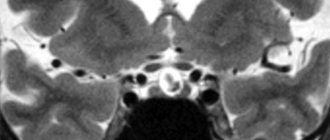The pineal gland is considered the center of coordination of human supernatural abilities. Ancient healers believed that a pea-sized section of the brain controls the ability to read other people's thoughts, extrasensory skills, the ability to independently heal from somatic diseases and slow down the process of physiological aging.
The pineal gland is responsible for the production of melatonin circulating in the blood, which determines its role in the formation of the biological rhythms of the body, in particular the cycle consisting of periods of sleep and wakefulness. Melatonin regulates body temperature and the activity of the cardiovascular system, participates in protecting the body from oxidative stress, and has an immunomodulatory effect.
Pineal Gland Definition
In humans, the pineal gland is located deep in the medulla under the cerebral hemispheres - it is a control center where the coordination of the activities of the pancreatic islets, adrenal glands, thyroid and parathyroid glands, and pituitary gland occurs. Moreover, the effect on the listed parts of the endocrine system is often inhibitory (suppressing the activity of the substances they produce) in nature.
The pineal gland, also known as the pineal gland, closely interacts with the visual system (anatomically connected with the visual thalamus), due to which it regulates circadian rhythms (alternating periods of sleep and wakefulness). Sunlight stimulates the production of serotonin, a precursor to melatonin. At night, the brain produces melatonin. The path of movement of nerve impulses has been established:
- Retina of the organs of vision.
- Retinohypothalamic tract.
- Sections of the spinal cord.
- Ganglia (nerve nodes) of the sympathetic system.
- Pineal gland.
The pineal gland is a brain structure that performs the tasks of the endocrine gland, which predetermines its endocrine role. The pineal gland in appearance resembles a coniferous cone, which led to the name; its activity in the brain is closely related to the functioning of the pituitary gland.
The cells of the pineal gland secrete substances that inhibit the activity of the pituitary gland, which produces gonadotropic (sex) hormones, until physical maturation. Substances secreted by the pineal gland are involved in the fine regulation of metabolic processes occurring in the brain and in the body as a whole.
The human epiphysis is located in the area of the four tubercles of the midbrain, where it extends slightly in the caudal (toward the spinal column) direction. The gland is located behind the choroid plexus. The shape of the department is often ovoid (egg-shaped). Less commonly, iron is presented in the shape of a ball or cone. The dimensions vary slightly, the length of the pineal gland is about 8-15 mm, the width is 6-10 mm.
The weight of the brain in an adult is 120-200 mg. The location of the epiphysis above the area of the third ventricle determines the connection of these sections through the pedicle. The blood supply to the department is carried out by a system formed by the carotid arteries. The vessels supplying the pineal body arise from the choroid plexus located in the 3rd ventricle. Intense blood flow is observed in the area of the gland, which indirectly confirms its importance in the body.
A feature of the circulatory system of the department is weak connections with endothelial cells, which in this case causes the failure of the blood-brain barrier. Innervation of the area occurs with the participation of nerve fibers of the sympathetic system extending from the cervical ganglia.
The development of the pineal gland occurs during embryogenesis. At the 5th week of gestation, the rudiments of the organ appear, which is formed from the protrusion of the diencephalon. The basis of the rudiment is an epithelial diverticulum (sac-like protrusion), the walls of which gradually thicken.
The ependymal lining (thin epithelial membrane) serves as the basis for the formation of 2 lobes, between which a vascular system is formed. The anatomy of the pineal gland confirms its close interaction with the organs of vision and the hypothalamus - all departments originate from the diencephalon.
These brain structures arose as a single mechanism responsible for the body’s response to light and to changes in light conditions. The production of epiphyseal hormones in the fetus begins in the first trimester of gestation. From this moment on, a person acquires the ability to sleep.
How to treat a cyst in the head
Treatment tactics for pineal gland cysts directly depend on the volume of the defect, as well as on the severity of pathological symptoms. If at the beginning of the disease, methods of suppressing tumor activity using folk remedies - decoctions and infusions of medicinal herbs - are quite acceptable, then later, when the epiphysis cyst grows, other options for eliminating the pathology are required.
Medication methods
- diuretics – to relieve intracranial hypertension;
- anticonvulsant medications – reducing signs of seizures;
- analgesics – suppression of pain impulses in the head;
- neuroleptics – for severe psychotic disorders.
Surgical
If drug treatment of the cyst (pinealoma) does not bring a positive result, or the presence of echinococcosis is established, then surgical excision of the lesion is resorted to. The pineal gland is located deep in the brain, so when deciding on surgical intervention, neurosurgeons take into account not only the indications, but also the contraindications for this treatment option for pineal cysts. After all, 2/3 of cases of such treatment are accompanied by complications.
Bypass surgery
One of the methods of alleviating painful symptoms is shunting - creating a bypass to extract the contents of the pineal gland cyst, treatment to reduce the severity of hydrocephalus. Endoscopy is safer - a minimally invasive procedure by which the liquid part of the tumor is removed, its walls merge, and the pressure inside the brain is reduced. The choice of the optimal surgical option is the prerogative of the neurosurgeon.
Endoscopy
Endoscopy (minimally invasive endoscopic surgery) is one of the safest methods. During this operation, the doctor removes the fluid accumulated in the cyst using a special drainage endoscope, which is inserted into the skull. The walls of the pinealoma then dissolve over time. This method is prohibited for use in oncology. This procedure reduces the pressure of the contents and walls of the cyst on the brain and reduces intracranial pressure.
Craniotomy
This surgical procedure is the most effective, but very risky due to possible complications. It is not suitable for the frail and elderly.
The structure of the pineal gland
The pineal gland is a part of the brain that responds to the degree of illumination, which determines its decisive role in controlling the state of sleep and wakefulness. The external structure of the epiphysis is similar to a cone, while the internal structure involves division into lobules. The pineal gland is located in the middle, deep in the head, where it is interconnected with different parts of the brain - the intermediate, middle, and ventricular system.
The gland in the brain is located in a soft shell - the substance of the pineal gland is covered with a capsule consisting of connective tissue. Trabeculae (plates, septa) extend inward from the walls of the capsule, which divide the organ into fragments. The gland lobules consist of 2 types of cells. All cells have long processes. Pinealocytes (95% of them) synthesize serotonin during the day and melatonin at night.
The second type of cell is astrocytes (glial), which support the activity of pinealocytes. Biogenic amines are found in the tissues of the gland, which confirms the metabolic activity of the department. Enzymes present in tissues serve as catalysts for the synthesis and deactivation of biogenic amines. In the pineal body, intensive metabolism of proteins, lipids, nucleic acids, and phosphorus compounds occurs.
What threatens a cyst in the gland?
An epiphysis cyst (pinealoma) is not classified as oncology. The cells of the formation have a normal morphology, and the cyst itself does not grow in the brain tissue and does not metastasize to the body.
The consequences for life and health strongly depend on the etiology of cyst formation, as well as on the individual dynamics of the development of formation.
Among the main ones we can mention:
- disruptions in the functioning of the cardiovascular system;
- chronic fatigue syndrome;
- chronic headaches, including migraines;
- neurological disorders of skeletal muscles, partial paralysis;
- change in any sensitivity (tactile, temperature);
- epileptic seizures;
- sleep disorders;
- mental disorders - depression, neuroses, obsessive disorders;
- in childhood, deviations in psychosomatic development may begin.
The degree of danger varies greatly from case to case.
Functions of the pineal gland
The functions of the pineal gland remain poorly understood due to its small size and inaccessible location. Some ancient researchers imagined the brain region as a rudimentary (lost significance) eye. It was believed that the organ of vision allowed a person to monitor what was happening from above.
The French philosopher Descartes believed that the gland performs the task of an intermediary between paired organs that perceive information coming from the outside world - eyes, ears, hands (tactile sensations). The main functions of the pineal gland, located in the brain:
- Production of hormones that regulate metabolic processes.
- Production of hormones that control biological rhythms.
- Delayed puberty.
- Maintaining hormonal homeostasis (self-regulation, maintaining a constant state through coordinated reactions).
- Inhibition of the activity of the pituitary gland and hypothalamus at night.
- Participation in the formation of emotional and behavioral reactions.
The pineal gland has a typical glandular structure and its functions are related to the functioning of the endocrine system. Different hormonal receptors have been found in the pineal gland tissue, which confirms the mutual influence between it and other endocrine organs. The pineal gland closely interacts with the diencephalon, which controls the activity of the autonomic nervous system, the work of internal organs and endocrine glands.
Prevention of diseases associated with the pineal gland
Despite the fact that scientists have relatively begun to study the pineal gland and what exactly it is, there are a number of preventive recommendations designed to reduce the risk of developing pathologies of this organ.
- In order for the state of the brain to remain stable throughout life, it is necessary to avoid hard gamma radiation to the brain, cervical and thoracic regions.
- It is necessary to monitor the condition of your blood vessels and heart. Avoid the accumulation of cholesterol and the formation of blood clots. To do this, you need to adjust your diet so that it does not contain fatty foods. There is a table of the content of proteins, fats and carbohydrates in each type of product; when calculating the diet, you must rely on it. Seafood products rich in iodine are a must. Also for cardiovascular health, exercise regularly.
- Healthy sleep is responsible for the proper functioning of the pineal gland, so a sleep schedule must be observed. The norm of sleep is defined as 7-8 hours a day and at night, since some substances in the body are produced only in the dark.
- To ensure that a person does not have congenital pathologies of the pineal gland, as well as the pituitary gland and hypothalamus, during pregnancy his mother must monitor her condition and regularly visit the doctor responsible for the progress of her pregnancy.
- In order to be able to catch a developing pathology in its initial stage, it is necessary to undergo regular medical examinations. Tumors in the brain grow slowly, so get a brain scan once a year and everything will be fine.
In order for the hormonal picture in the body to correspond to normal levels, it is necessary to give up alcohol and cigarettes. The disorders and pathologies caused in people by these habits are as diverse as they are deadly.
SECRETS OF THE BRAIN - EPIPHYSUS
Biology lesson No. 45. The structure and functions of parts of the brain.
Epiphysis Vision. Alexander Palienko.
Third eye (epiphysis, pineal gland) - how to open and activation methods
Pineal gland Pineal gland I recommend!
The pineal gland produces melatonin
S.V. Savelyev: Epiphysis
Should the pineal gland be activated?
Third eye, Pineal gland, Intuition - research by scientists
PINEAL GLAND
Powerful Activation of the Pineal Gland Third Eye Opening with Binaural Ris
GK. Pentabrother. Pineal gland - one of the implants
The mystery of the pineal gland!!
Third eye. Pineal gland. Penial gland. Pineal body.
Third eye - pineal gland pineal gland
Secret capabilities of the pineal gland and melatonin. Who uses them?
The Pineal Gland is a Portal to Higher Dimensions
SECRETS OF THE BRAIN - EPIPHYSUS
Biology lesson No. 45. The structure and functions of parts of the brain.
Epiphysis Vision. Alexander Palienko.
Third eye (epiphysis, pineal gland) - how to open and activation methods
Pineal gland Pineal gland I recommend!
The pineal gland produces melatonin
S.V. Savelyev: Epiphysis
Should the pineal gland be activated?
Third eye, Pineal gland, Intuition - research by scientists
PINEAL GLAND
Powerful Activation of the Pineal Gland Third Eye Opening with Binaural Ris
GK. Pentabrother. Pineal gland - one of the implants
The mystery of the pineal gland!!
Third eye. Pineal gland. Penial gland. Pineal body.
Third eye - pineal gland pineal gland
Secret capabilities of the pineal gland and melatonin. Who uses them?
The Pineal Gland is a Portal to Higher Dimensions
Characteristics of pineal gland hormones
The gland produces more than 40 hormones of peptide origin and other substances involved in the regulation of physiological processes. The main hormones produced by the pineal gland include serotonin and melatonin. Both hormones are regulators of biological rhythms. The precursor in both cases is the amino acid tryptophan. Other types:
- A hormone that coordinates calcium levels.
- Arginine-vasotocin (controls the tone of arterial walls, inhibits the production of pituitary hormones - luteinizing and follicle-stimulating).
- A hormone that suppresses the growth of malignant tumors.
- Antigonadotropin (controls sexual function).
- Pinealin (regulates glucose levels).
Hormones produced by the pineal gland or pineal gland suppress the electrical activity of the brain, slow down neuropsychic activity, and have a hypnotic, sedative, and calming effect. Action of pineal hormones:
- Normalize blood pressure indicators.
- Increases the body's resistance to stress of various etiologies.
- They restrain the activity of the reproductive function until adequate physical development occurs.
- Allows you to adapt to changing external conditions (time zones, climate).
- Provide antioxidant and antitumor protection.
The pineal gland regulates all processes in the body that occur cyclically (for example, the menstrual cycle). The department is a connecting link that unites into a single system any physiological processes that depend on biological rhythms.
Melatonin
Inhibits the production of thyroid hormones produced by the thyroid gland and GnRH produced by the hypothalamus. Inhibits the synthesis of adrenal hormones and somatotropin (growth hormone), which is produced by the pituitary gland. Adjusts the body to stay in a state of rest.
In boys, melatonin production slows down during puberty. In women, melatonin levels peak during menstruation. At the time of ovulation, hormone levels are at their lowest. Melatonin is actively involved in the management of reproductive function. Its tasks in the female body include:
- Regulation of the moment of birth.
- Coordination of labor activities.
- Adaptation of the fetus and newborn.
- Regulation of the process of physiological aging of the reproductive system.
- Regulation of the menstrual cycle.
The hormone does not accumulate in the pineal gland. After the amino acid tryptophan is converted into serotonin and then into melatonin, the latter immediately enters the bloodstream and cerebrospinal fluid. The concentration of melatonin in the blood of an adult during the day is less than 20 ng/ml, at night – 60-110 ng/ml. In most cases, the secretion of the hormone in the body of healthy people occurs cyclically and rhythmically, sometimes deviations from the usual indicators are observed.
Extrapineal melatonin reaches target cells through the bloodstream. The hormone activates the absorption of glucose and the process of deposition (accumulation) of glycogen in tissues. Affects the level of ATP and creatine phosphate (a source of energy that supports the viability of nerve cells in conditions of oxygen deficiency), causing its increase. Other important features:
- Stimulation of metabolism and elimination of free radicals.
- Formation of an immune response.
- Controlling the process of cell proliferation and differentiation.
Melatonin receptors are most receptive at night. Melatonin inhibits the flow of calcium into bone tissue and reduces the rate of blood clot formation, which correlates with an increase in the period of bleeding cessation. The hormone regulates the sleep phase, which is necessary to maintain a balanced psycho-emotional state.
Serotonin
Serotonin is the most important neurotransmitter of the central nervous system. It is actively synthesized during the daytime and plays the role of an activator of many physiological processes. Elevated serotonin levels correlate with wakefulness. Serotonin is called the hormone of joy and happiness; it is responsible for creating and maintaining a good mood.
It is a mediator of allergic and inflammatory reactions. When serotonin levels decrease, a person’s pain system is activated, making him susceptible to painful stimuli. Then a weak stimulus causes severe pain. Serotonin increases the ability of platelets to aggregate and form clots.
Adrenoglomerulotropin
The hormone is a product of the biological transformation of melatonin. Stimulates the synthesis of aldosterone (the main mineralocorticosteroid hormone) in the adrenal cortex. Its other functions are not well understood.
Dimethyltryptamine
The pineal gland affects the functioning of the entire brain because it produces dimethyltryptamine (an endogenous psychedelic), which is responsible for the state of consciousness, which correlates with the process of activation of supernatural abilities, the occurrence of hallucinations (visual, auditory), changes in the perception of reality, space and time.
Therapeutic value
The pineal gland is the least studied part of the human brain.
A study of the gland shows that premature puberty and its delay are associated with this organ.
However, the pathogenesis of this process has not yet been clarified, since both structural and hormonal factors may be involved in the pathology.
Unlike other endocrine glands (including the pituitary, adrenal, or thyroid glands), there are no clearly defined syndromes of pineal hormone deficiency or excess. The absence of disorders of this type is an obstacle to research into the putative therapeutic role of the pineal gland.
Proposed roles for the gland may include the possibility that melatonin secretion is a key factor in the activation and maintenance of nocturnal sleep.
There is also relatively little known about the genetic mutations that affect melatonin levels and their relationships to study sleep disorders and other circadian rhythm pathologies.
The artificial introduction of melatonin into the human body produces a variety of effects:
- immune reactions;
- cellular changes;
- influence the body's defense against oxidative stress.
These observations are stimulating research into the therapeutic potential of melatonin and its analogues for the treatment of certain sleep disorders.
Melatonin concentration by hour
Studies of drug metabolism in the pineal gland indicate that it may interfere with the effects of recreational drugs such as cocaine and antidepressants, particularly fluoxetine, and that melatonin produced by the gland may protect against neurodegeneration of the central nervous system.
Studies of pineal gland regulation of bone turnover indicate that melatonin also regulates new bone deposition. Melatonin mediates its effect on bone cells through MT2 receptors. This interesting fact could lead to the development of new treatments for osteoporosis.
In some areas of the brain, particularly the pineal gland, there are ring structures, the number of which increases with age. Chemical analysis shows that they consist of calcium phosphate, calcium carbonate, magnesium phosphate and ammonium phosphate.
Calcium and phosphorus deposits in the pineal gland appear to be associated with aging in the human body.
The pineal gland not only regulates daily and seasonal circadian rhythms, sleep-wake patterns, sleep quality and duration. As a result of this action, it determines the level of all hormones in the human body, regulating the level of stress and physical performance of a person. Well-being and level of mental activity largely depend on the activity of this small organ.
Regulation of functioning
It is worth noting that the features of the work and regulation of the pineal gland have not yet been studied enough. Research is difficult due to the small size of the gland and its location. However, it has been proven that the pineal gland is controlled not only by nerve endings, but is also receptive to light.
Of course, light does not penetrate directly to the pineal gland. However, photons stimulate specific ganglion cells in the retina. From here, the nerve impulse is transmitted to the suprachiasmatic nucleus of the hypothalamus, from where it is sent through the paraventricular nucleus to the upper segments of the thoracic spinal cord. From here, excitation is transmitted to the pineal gland through the superior cervical ganglion. It is worth noting that the impulse arising in the suprachiasmatic nucleus does not stimulate, but, on the contrary, inhibits the functioning of the pineal gland. Thus, in light, melatonin secretion decreases, and in darkness (at night) it increases. As for the stimulation of the pineal gland, the neurotransmitter in this case is norepinephrine.
Pineal gland in modern esotericism
It's no secret that a lot of mystical stories and esoteric theories are associated with the pineal gland. The fact is that this organ was discovered relatively late, and hidden deep in the brain structures, which prompted some scientists and philosophers to think about the extreme importance of the pineal gland. For example, Rene Descartes in his works called the pineal gland “the saddle of the soul.” And indeed, it was this structure that for decades and even centuries was perceived as a kind of container for the human soul.
There are also more ancient beliefs about the mystical “third eye,” which allows a person to see the invisible and is responsible for various extrasensory abilities. For example, in the 19th century, a theory was put forward that a mysterious third eye actually exists. But if in some animals it is located on the surface of the body (for example, in some cyclostomes the pineal gland actually comes to the surface and serves as a photosensor), then in people the eye “hides” inside the skull.
Hyperfunction and hypofunction of the pineal gland
If for some reason the pineal gland malfunctions, a person begins to experience serious disorders in the functionality of the entire body.
Pelizzi syndrome begins to develop, which most often occurs in boys and young men aged 5-20 years. The syndrome is characterized by the following signs: accelerated growth of the skeleton and muscles, changes in voice, mental disorders, and strong attraction to the opposite sex.
The most pronounced signs of pathology include the early development and formation of the genital organs and secondary signs - testes, as in adult men; pubic hair in boys; menstruation and even the possibility of early pregnancy in girls.
Where is the pineal gland located? Location of the gland
The superior cerebral appendage is located at the bottom of the third cerebral ventricle. In the oblong depression between the upper colliculi of the quadrigeminal, where the epiphysis is located, leads come from the pineal gland that attach it to the visual tuberosities.
Thus, one side of the epiphysis is located in the region of the midbrain, and the other is adjacent to the third ventricle. In simple terms, the pineal gland is a type of gland located between the hemispheres of the brain. The volume of the gland in an adult is from 25 to 430 mg, while the mass of the pineal gland depends on many factors: the person’s age, his state of health, gender, environmental conditions and climate (the average is 0.2 grams).











